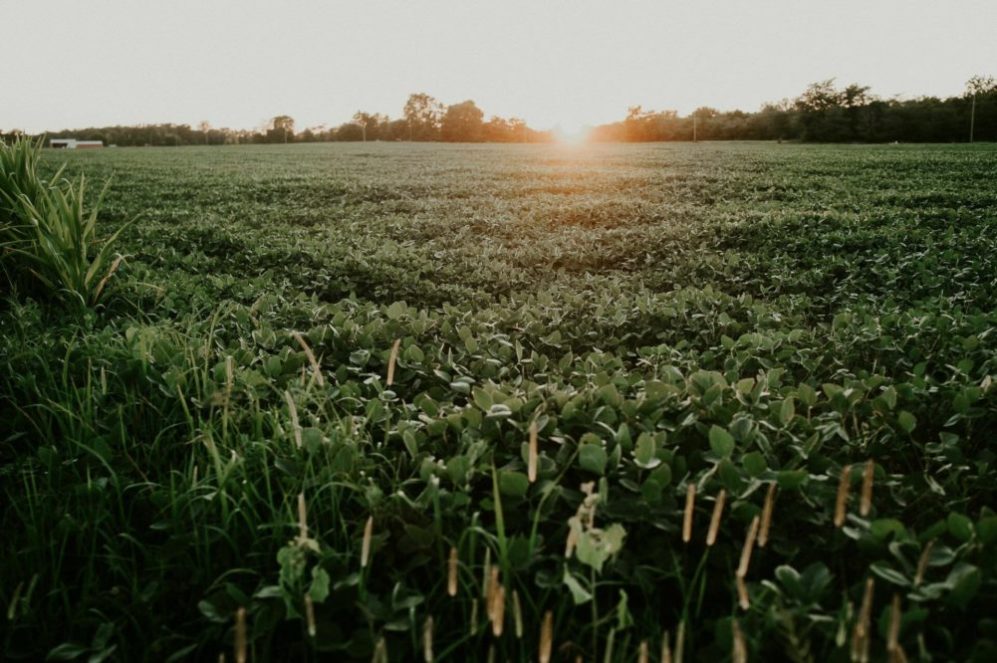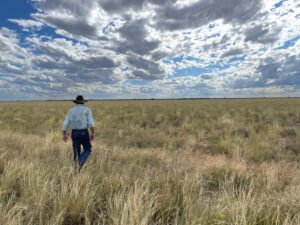Carbon credit markets are being touted by some as a promising method for incentivizing farmers to adopt farming practices that sequester carbon while giving them an additional income stream. The concept has now caught the attention of major global commodities trader Cargill alongside the Iowa Soybean Association.
The partners are getting their feet wet by launching a unique experiment into whether Iowa soy farmers are ready to undertake farming practices that would improve water quality and sequester carbon in exchange for cash.
Dubbed the Soil & Water Outcomes Fund (SWOF), the project will onboard Iowa soy farmers who make proposals about the practices they would adopt to improve the ecosystem of their farm and reach those goals.
It uses the farmer’s current practices as a baseline and does not provide a lookback credit for previous beneficial practices. SWOF is not providing Iowa soy farmers with prescriptions, but is able to provide guidance to farmers about the practices that are most beneficial for carbon drawdown as well as mitigating phosphorous and nitrogen quantities in waterways. The COMET-Farm tool will be used to measure carbon sequestration while the US Department of Agriculture’s Nutrient Tracking Tool measures water quality.
Via the fund, Cargill will then pay farmers for adopting these practices in the form of carbon credits that the agribusiness will use to offset its carbon footprint.
“Once a year, we will transact with municipalities and our carbon purchasers, such as Cargill in the pilot, to transfer ownership of those outcomes to the various parties, ” Ryan Sirolli, director of row crop sustainability at Cargill, told AFN.
The partnership also involves Quantified Ventures, an outcomes-based capital firm. The firm is assisting the partners with structuring the financial aspects of the offering with an eye towards scaling in the future. The Walton Family Foundation will also provide funding for the project. Sustainable Environmental Consultants will verify the results of the project.
Why is Cargill doing this?
Cargill has found itself in the hot seat over allegations that its supply chain facilitates ongoing environmental harm on more than one occasion particularly when it comes to deforestation. In response, the corporation has announced a number of initiatives designed to clean up its global impact including reduction targets for greenhouse gas emissions including a Scope 3 target of reducing greenhouse gas emissions in its total global supply chains by 30% per ton of product by 2030. Soy production has also been linked to deforestation as well as a number of environmental harms including soil runoff and poor water quality.
“For us to achieve that over the next 10 years, we are really thinking about solutions that enable us to keep farmers and agriculture at the center of what we do while addressing long-term economics and productivity so they can achieve greater resiliency,” Sirolli says. “We like the ecosystem services approach. If we can value the same acre by all those ecosystem benefits like water and carbon while diluting the administrative, verification, and on-farm costs, then we can maximize value for farmers.”
What’s unique about its approach to the idea of farmers as ecosystem services providers is the focus on not just carbon drawdown, but water quality improvement as well.
“We had started with this concept of a water quality project in Iowa and the hypothesis was that we could work with municipalities to do water quality improvement projects in watersheds upstream while presenting a lower cost solution compared to building treatment facilities. We wanted to present farmers as the solution,” Adam Kiel, director of conservation and external programs at Iowa Soybean Association explains. “As we went through the exercise, we realized that the actions farmers are taking to improve water are also sequestering carbon in the soil.”
To date, Iowa soy farmers have enrolled roughly 10,000 acres in a pilot program that will debut this Spring. The program has plans to expand beyond Iowa next season. SWOF will pay farmers $30 to $45 per acre in the pilot project pending determination of environmental results. SWOF estimates that the project could prevent the runoff of 100,000 pounds of nitrogen and 10,000 pounds of phosphorous this year while sequestering 7,500 tons of carbon. This is the equivalent of taking 1,480 cars off the road by its measure.
Welcome revenue amid Covid-19
The news of a new potential income stream is likely welcome among farmers who are facing severe supply chain disruption due to Covid-19, following 2019’s poor harvest due to severe weather events. A global trade war with China and depressed prices are additional factors putting farmers up against the financial ropes. But the looming question of whether downstream payments for carbon sequestered through practices adopted today is enough to incentivize them is very real.
Carbon credit markets tailored to farming have been emerging slowly. Indigo Ag operates a carbon marketplace for farmers while Nori and LocusAg recently partnered for a new effort. The Western Sustainability Exchange is working with ranchers in Montana to incentivize the adoption of rotational grazing through a carbon credit market approach. Although not tied into a carbon credit market, Stonyfield is working on a tech-centric project to measure sequestration and other environmental health data on its dairy farmers’ operations.
But critics claim the science behind measuring carbon drawdown is still too shaky to make a sure bet. Others aren’t convinced that the system will incentivize farmers for the long-haul.
“We will support this and take the carbon reductions just to get started and learn as much as we can through the pilot about farmer behaviors. Whether this is a trigger to get farmers to take on new behaviors is the thing we are most interested in testing right now,” Sirolli says. “There is a risk of adopting new practices on the front end that we have to test. When you start to stack the value of water credits on top of soil credits you start to get to a value that may begin to shift farmer behavior or if a farmer is on the fence it will be enough to push them.”




